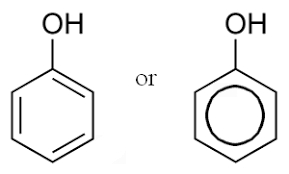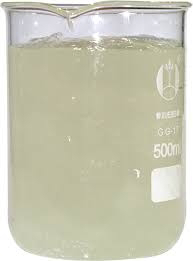Liquid antiseptic are antimicrobial substances that are applied to living tissue/skin to reduce the possibility of infection, sepsis, or putrefaction.
Antiseptics are generally distinguished from antibiotics by the latter’s ability to be transported through the lymphatic system to destroy bacteria within the body, and from disinfectants, which destroy microorganisms found on non-living objects.
Disinfectants do not kill bacterial spores e.g. on surgical instruments, a sterilization process is required for that. Even sterilization may not destroy prions.
Some antiseptics are true germicides, capable of destroying microbes (bacteriocidal), while others are bacteriostatic and only prevent or inhibit their growth.
Antibacterial are antiseptics that have the proven ability to act against bacteria.
Microbicides which destroy virus particles are called viricides or antivirals.
It (antiseptics) produces a white emulsion of oil droplets when diluted during use.
The active ingredient which defines its unique antiseptic property is an aromatic, chemical compound known as Chloroxylenol (C8H9C1O). Chloroxylenol makes up 4.8% of Liquid antiseptic (Dettol’s) total mixture, with the rest composed of pine oil, isopropanol alcohol, castor oil soap, caramel, and water.
The traditional liquid product is a light yellow colour, but becomes milky white when diluted in water. The diluted mixture can be used to clean cuts or wounds, treat acne, washing of underwear, etc.
EQUIPMENT’S/APPARATUS USED IN LIQUID ANTISEPTIC PRODUCTION
Bowl
Stirrer
Measuring cylinder
Weighing balance
Filter cloth
*CHEMICALS USED IN LIQUID ANTISEPTIC AND THEIR FUNCTIONS*
*CHLOROXYLENOL:* Chloroxylenol (4-chloro-3 ,5-dimethylphenol ) is
a broad spectrum antimicrobial chemical compound used to control bacteria, algae, fungi and virus . It turns milky in water and is used in hospitals and households for disinfection and sanitation. It is also commonly used in antibacterial soaps, wound-cleansing applications and household antiseptics such as Dettol liquid, cream and ointments. Studies have shown an anti- microbial activity which is enhanced by additives. Its antibacterial action is due to disruption of cell membrane potentials. Chloroxylenol is one of the most mature antimicrobial agents and principal ingredient in Dettol, a household disinfectant and antiseptic.
Chloroxylenol is not significantly toxic to humans and other mammals. It is practically non-toxic to freshwater invertebrates and highly toxic to fish. It is a mild skin irritant and may trigger allergic reactions in some individuals
PHENOL: Phenol, also known as carbolic acid, is an aromatic organic compound with the molecular formula C5H5OH. It is a white crystalline solid that is volatile. The molecule consists of a phenyl group (-C6 H5) bonded to a hydroxyl group (-OH). It is mildly acidic, but requires careful handling due to its propensity to cause chemical burns. Phenol was first extracted from coal tar, but today is produced on a large scale (about 7 billion kg/year) from petroleum. It is an important industrial commodity as a precursor to many materials and useful compounds. Its major uses involve its conversion to plastics or related materials. Phenol and its chemical derivatives are key for building polycarbonates, epoxies, Bakelite, nylon, detergents, herbicides such as phenoxy herbicides, and numerous pharmaceutical drugs.
Although similar to alcohols, phenols have unique distinguishing properties. Unlike in alcohols where the hydroxyl group is bound to a saturated carbon atom, in phenols the hydroxyl group is attached to an unsaturated aromatic (alternating double and single bond) hydrocarbon ring such as benzene. Consequently, phenols have greater acidity than alcohols due to stabilization of the conjugate base through resonance in the aromatic ring.
It is corrosive to the skin and sometimes toxic to sensitive people at its raw stage.
Pine oil is antiseptic and can be used in treating cuts, sores, and fungal infections. The most widely known use of pine oil is in treating skin problems. Dermatologist often prescribes the oil in treating the following conditions psoriasis, itching, eczema, scabies, sores, and fleas etc.
TEXAPON: Texapon consists of anionic base surfactants primarily derived from natural alcohols. They act as primary surfactants in the cosmetic and detergent industry as cleaning agents due to their strong washing performance and foaming properties.
It is used in Liquid antiseptic as a binder and as a foaming agent.
*MEASUREMENT TABLE FOR LIQUID ANTISEPTIC PRODUCTION*
Ingredient Quantity
Chloroxylenol 1.5liter
Pine Oil 2.5 liter
Phenol 0.5 liter
Iso (IPA) 15 liter
Water 5 liter
Texapon 0.5 liter
Colour (brown) a pinch










Comments
Post a Comment